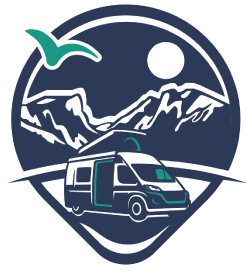
Close

Once the End of the World and its Surroundings circuit is completed, we have the option to further explore the Great Island of Tierra del Fuego, to delve deeper into the areas of Argentina and Chile (Remember that the island is shared by both countries).
We left Tolhuin and the first option taking the complementary route "A" is CABO SAN PABLOWith absolute quiet, you can wake up in front of a lighthouse on a solitary cape, a mysterious shipwrecked vessel from 40 years ago, and a distinguished old ranch.
Then we continue driving to the north of the island, where we will cross RÍO GRANDE which is the largest city on the island of Tierra del Fuego on the Argentine side. It is the paradise for sport fishing, with excellent level fishing preserves that offer the opportunity to obtain specimens of trucha marrón, trucha arco iris and large salmon.
Driving 83 kilometers northeastern we will reach the San Sebastián border step where we will cross into the REPUBLIC OF CHILE, where there is an office of the National Customs Administration and facilities of the Argentine National Gendarmerie where we will carry out the necessary procedures to continue our journey. It has a small settlement with accommodation and a restaurant.
https://www.argentina.gob.ar/seguridad/pasosinternacionales/detalle/ruta/69/San-Sebasti%C3%A1n
Continuing along the Chilean roads heading west, we will arrive at PORVENIR which is the city with the largest population in the province of Tierra del Fuego on the Chilean side and also its capital.
Its main attraction is the Pingüino Rey Nature Reserve, located 114 kilometers from the city.
The king penguin is the second largest of the 18 species of penguins in the world. It is a migratory bird that moves in search of food, and in 2010, a colony decided to establish itself in this area. Don't miss the opportunity to visit this unique project aimed at protecting the penguins. (Due to the limited number of visitors per hour and day, entry is by reservation only to protect the ecosystem and reduce anthropogenic effects).
And as a last destination in the PARQUE NATURAL KARUKINKA where you can observe up close peat bogs, Andean regions, Patagonian steppe, shrublands, and coastline, representative ecosystems of Austral biodiversity and the subantarctic region. Among the native mammals, the Guanaco stands out, forming family groups and freely roaming and feeding with their young (called chulengos) in the steppe and forests. It has camping facilities and trails to explore.
Copyright © 2023 Patagonia drivers. All Rights Reserved. Designed with 